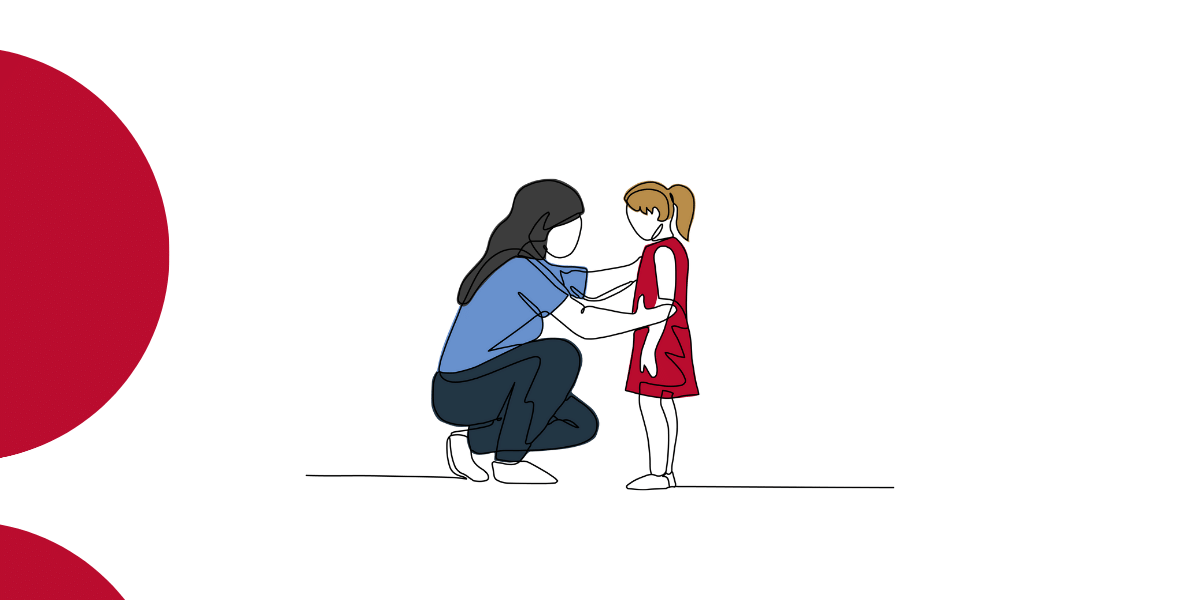The role of praise in working with young people
Aug 2020
Written by Noel Macnamara
Traumatised children tend to receive little praise, and therefore, don’t respond well to praise
We can see each of our daily interactions with each of the young people we care for as bids for connection. By choosing to turn toward, to turn away, or turn against each other’s bid for connection and opportunity for change.
No matter how ordinary or small, we establish a foundation that could determine the future success or failure of that relationship. Good relationships, and trust-building, usually develop slowly over time, growing out of the many mundane, little interactions we share each day.
Rather than relying on reprimands, sanctions, rewards and other methods of external control, a more effective way to influence young people in a positive way is to invest in building a strong relationship with them. I’m not advocating being uninvolved, or never setting limits or natural consequences. Rather, I’m advocating that we invest more of our attention as a carer in building a positive connection with the young people in our care. When we have a strong relationship with young people, then we are more likely to be able to influence them in a positive direction.
Reflection
Have you ever stopped to think about how many times you react positively to the young people in a given day? You may find yourself criticising far more often than praising or complimenting. How would you feel about a manager who treated you with that much negative guidance, even if it was well-intentioned? How do you feel when someone gives you positive comments?
We can reflect on our own lives to see the truth in this. Think of various teachers, coaches, trainers, and managers that you’ve had over the years. Can you think of many instances in which you would work very hard for them just because you felt connected with them and wanted to meet or exceed their expectations? Think of close friends or your significant other – how often do you do things for them for the sake of the relationship rather than to gain a tangible reward or avoid some punishment? A strong relationship bond is the foundation of our influence as carers…as it is in all our social relationships.
There are many ways to strengthen the connection or relationship you have with the young people in your care. This blog will explore one of them: the 5:1 ratio of positive to negative interaction.
What is 5-to-1 Ratio?

Research shows that in order to have a stable relationship, the ratio of positive to negative interactions should be at least 5:1—five positive interactions for every negative one (Lisitsa, 2012). 5-to-1 Ratio is a practice in which ITC workers increase the number of positive interactions with young people as compared to negative interactions. Throughout the day and night, ITC workers and young people share numerous interactions, such as being woken-up, making breakfast, getting ready for school, trips out of the house, sitting through bad dreams, listening to fears etc. Research has supported the idea that there is a “critical ratio” of positive to negative interactions (Gottman, 2011) between adults and young people to best support and sustain constructive young person-worker relationships. That ratio is to provide 5 positive interactions (e.g. friendly conversation, nonverbal acknowledgement, specific praise, positive feedback etc.) to every 1 negative interaction (e.g. reprimand, criticism etc.) for each young person. It is important to note that this is not just about complimenting the young person. Though compliments are one form of positive interaction, it is about forming positive working relationships in general through all kinds of interactions.
How will this help young people?

The 5-to-1 Ratio is meant to improve the young persons’ feelings of connectedness, positivity and safety to enhance the residential experience. The purpose is to improve engagement and decrease disruption/disconnection as a result of the more positive climate. By investing young people in the value of the ITC residential experience through creating positive interactions, ITC workers can encourage better behaviour and stronger feelings of the young person’s sense of belonging. Further, when young people feel connected and more positive, they are more likely to feel engaged and motivated to achieve in other areas of their lives and they may feel more able to come to you when they need to.
How does 5-to-1 Ratio work?
The 5-to-1 ratio relies on:
- Understanding the young person
- Attending to little things
- Keeping commitments
- Clarifying expectations
- Showing personal integrity
- Apologising sincerely when you make a mistake
The first understanding the young person’s internal world requires: curiosity, curiosity, curiosity…:
- What does the young person care about?
- What excites them?
- What distresses them?
- What is it they like to do?
- What they love to do?
- Who are the important people in their lives?
- Who are the people they love?
The second is for ITC workers to modify their interactions to increase positive interactions and minimise negative ones as needed to try to accomplish the preferred 5-1 ratio.
Tips for Using Praise
- When you feel good about the young person, say so. See if you can give the young person some words of encouragement every day. The small things you say can build up over time to have a big effect. For the young people who find it threatening to receive even the smallest compliment, it might just be saying ‘good job’ or fist bump.
- Catch the young people doing something right. Pay attention to what’s going on and you will see things that are going well; comment. Look for little changes and successes. Rather than waiting until the young person has done something big to give a compliment, try to praise any effort or improvement.
- Accept that everyone’s different. Praise the young person for her/his/their unique strengths and encourage her/him/them to develop and feel excited about her/his/their particular interests. This will help the young person to develop a sense of pride and confidence.
- Praise effort as well as achievement. Recognise and praise how hard the young person is trying – for example, ‘You worked really hard on keeping your cool’ or ‘Thank you for starting to sort out your room’. You need to find what works for each young person.
- Try to make your praise dependent on the young person’s behaviour, rather than your feelings. You might find that the more you look for good behaviour to praise, the more positive you’ll feel (and the more good behaviour you’ll see over time). It may not be immediate as our young people have developed many survival strategies to deal with their pain. Each young person will take a different amount of time and may need a different response.
- Taking a moment to check in: “What have you been doing since my last shift”.
- Smile or give friendly gestures: High fives, listening, full attention and eye contact.
- Secondary Praising: We know our young people we share the house with listen to everything they can. You could talk to another staff member and say, “how good is it that Anthony sat at the table with everyone today.” Or I love the way Anthony helped Clare to understand what just happened.”
- Be creative: For young people who cannot hear or take praise of any kind because it is too threatening, you could use the strategy of writing in a book each night as outlined in the Empowerment & Limit Setting Practice Guide knowing they will read it in their own space. They may not comment – just keep writing. Leave a note on their bed.
Watch out for insincere praise – it can trigger bad feelings
A young person might think you feel sorry for them, or that we are trying to be manipulative. Insincere praise might also send the message that we don’t really understand them.
Be careful, too, about using extreme praise
“That’s brilliant.” “I’ve never seen anyone do that well.”
Even if they believe you are sincere, this kind of inflated, over-the-top praise can lead to trouble. It sets a crazy-high standard. How can a young person hope to maintain it? It might just be saying ‘thank you’ for the task and adding their name is enough.
One important note: This strategy is meant to be 5-to-1 for each young person. That means that the ones that need the most focus for more positive interactions are also most likely to be the most challenging. If it seems very difficult with certain young people, consider it a work in progress and try to do a bit better each day with each young person. Good to share what worked with other team members and to remember it took 14 or 15 years for the young person to build their defences to feel safe – this is going to take a lot of repeats before change is remotely possible.
Conclusion
Praise is a very powerful but very underutilized reinforcer, especially considering its cost – it’s free! When workers increase their ratio of positive to negative to five to one, the behaviours and affect of all involved invariably improves. Five to one gets the job done!
References
Gottman, J. M. (2011). The science of trust: Emotional attunement for couples. W W Norton & Co.
Lisitsa, E. (2012, December 3). The Positive Perspective: Dr. Gottman’s Magic Ratio! Retrieved from http://www.gottmanblog.com/2012/12/the-positive-perspective-dr-gottmans.html







































